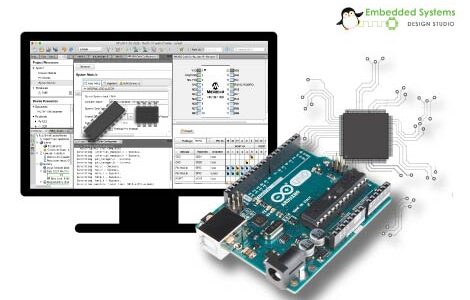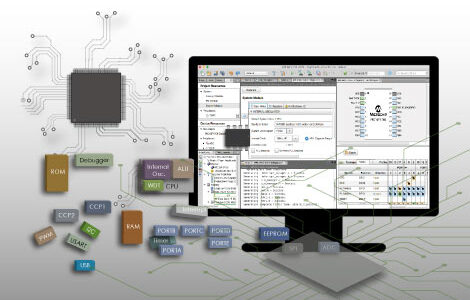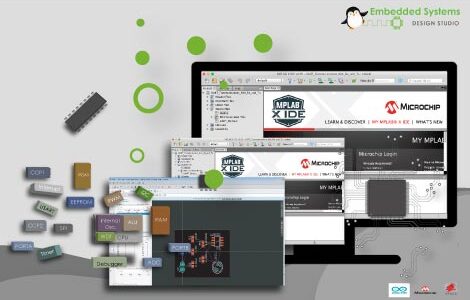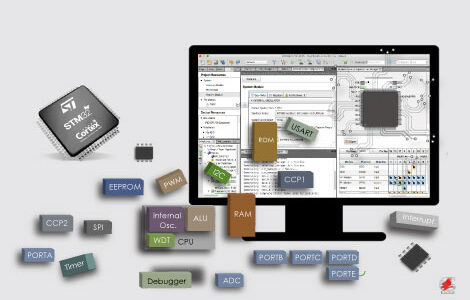Note: This course is not yet open for purchase. However, the ‘Curriculum‘ tab above provides access to the course lessons.
This advanced course dives deep into ARM-based microcontroller architecture, peripheral integration, advanced programming techniques, and efficient real-time system design. By the end of the course, participants will have mastered key ARM Cortex-M microcontrollers, with a strong emphasis on performance optimization, embedded system debugging, and low-power design strategies.
Target Audience:
- Engineers and developers with basic experience in microcontrollers (e.g., PIC, AVR) or embedded systems programming.
- Professionals aiming to transition into embedded systems development using ARM Cortex-M microcontrollers.
- Advanced embedded systems students looking to deepen their knowledge of ARM architecture.
Prerequisites:
- Basic knowledge of embedded systems and microcontrollers.
- Familiarity with C programming and low-level hardware interfacing.
- Experience with development environments such as STM32CubeIDE or Keil uVision is recommended.
Course Duration:
12 weeks (3 hours/week)
Self-paced option available with a total of 36 hours of content.
Module 1: Introduction to ARM Architecture
- Overview of ARM architecture (Cortex-M series).
- Understanding the ARM Cortex-M cores (M0, M0+, M3, M4, M7, M33, M55).
- ARM microcontroller families (STM32, NXP, Atmel, etc.).
- Memory mapping and memory protection.
- ARM instruction set and assembly language basics.
Module 2: ARM Cortex-M Microcontroller Deep Dive
- Architecture of ARM Cortex-M processors: pipelines, stages, interrupts.
- ARM microcontroller startup and boot process.
- System control block (SCB) and the interrupt vector table.
- Low-power modes and power management.
- Debugging features of ARM cores (serial wire debug, breakpoints, watchpoints).
Module 3: Advanced Embedded Programming in ARM
- Advanced C programming for ARM microcontrollers (direct register access, inline assembly).
- Writing interrupt service routines (ISRs) and managing nested interrupts.
- Working with peripherals (GPIO, ADC, PWM, Timers, UART, I2C, SPI).
- Memory management and stack optimization.
- RTOS integration for ARM-based systems (FreeRTOS, CMSIS RTOS).
- Advanced debugging and optimization techniques (STM32CubeMX, Keil, JTAG).
Module 4: Advanced Peripheral Integration
- Interfacing ARM microcontrollers with sensors, actuators, and displays.
- High-speed peripherals (Ethernet, USB, CAN, SD card).
- Audio and video processing with ARM (I2S, DAC/ADC).
- Motor control techniques (PWM, motor drivers).
- Real-time signal processing and filtering with ARM processors.
Module 5: Embedded System Design Optimization
- Code optimization for speed and memory usage.
- Low-power design strategies (dynamic voltage scaling, sleep modes).
- Signal integrity and PCB layout considerations.
- Using hardware accelerators (DMA, FPU, SIMD).
- Implementing secure systems (hardware encryption modules, secure boot).
Module 6: Real-World ARM System Design and Applications
- Building a real-time embedded application from scratch (e.g., a data logger, IoT device).
- Implementing communication protocols (TCP/IP stack, Modbus, CAN).
- Advanced debugging and profiling using oscilloscopes, logic analyzers, and advanced software tools (Segger J-Link, Keil, STM32CubeIDE).
- Case studies and best practices from industry (automotive, medical, industrial).
Module 7: Final Project and Assessment
- Capstone project: Design and develop a complex embedded system with ARM Cortex-M.
- Project must integrate multiple peripherals and demonstrate optimized performance and power efficiency.
- Code reviews, debugging sessions, and project presentations.
- Final written and practical exams.
Course Features:
- Hands-on exercises using ARM development boards (STM32, NXP, etc.).
- Project-based learning where participants apply learned skills to real-world applications.
- Access to industry-standard tools (STM32CubeIDE, Keil, J-Link).
- Live coding sessions and debugging workshops.
- Comprehensive course materials: Slide decks, reference documents, and code samples.
- Support forum for student interaction, feedback, and queries.
- Certificate of Completion after successful completion of the course and project.
Learning Outcomes:
By the end of this course, participants will:
- Understand ARM Cortex-M architecture and its peripherals.
- Be able to develop high-performance, low-power embedded systems.
- Integrate complex communication protocols and sensors into their designs.
- Be capable of optimizing and debugging embedded systems.
- Have experience designing real-world ARM-based systems.
This course would provide a solid foundation for professional engineers looking to master ARM-based systems and advance in embedded systems design.











